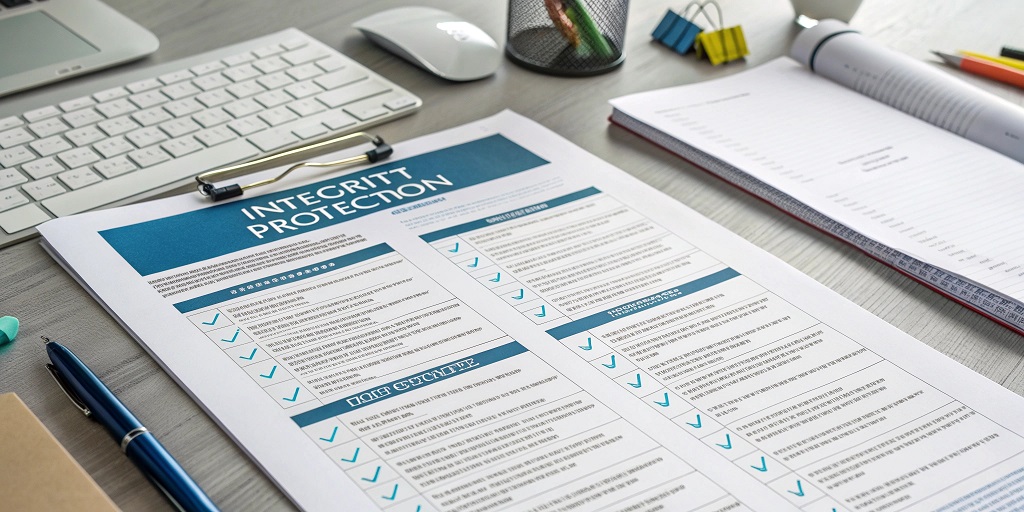Protecting sensitive government information doesn’t just come down to strong passwords and firewalls. It’s about building systems that keep data clean, trustworthy, and exactly as intended — even when accessed by multiple users or external partners. That’s where the integrity controls in CMMC level 2 requirements quietly do the heavy lifting.
Baseline Configuration Controls Ensuring CUI Stability
Baseline configuration controls are like the blueprint for your information systems. They establish the exact settings, components, and structure a system should start with before any updates or changes occur. Under CMMC level 2 requirements, this isn’t optional — it’s a key strategy for ensuring Controlled Unclassified Information (CUI) remains consistent and secure across environments.
If someone makes an unauthorized change or something goes wrong during a system update, the baseline helps organizations identify what’s different and restore it to a known good state. It’s a major part of maintaining CMMC level 2 compliance because it reduces the risk of misconfigurations that can lead to data compromise. C3PAO assessors will often review these configurations to ensure systems haven’t drifted from secure and approved setups.
Role-Based Access Implementation Protecting Data Integrity
Not everyone should have the same level of access — and that’s more than a best practice, it’s a clear requirement under CMMC level 2. Role-based access limits system privileges based on job duties, meaning users can only view or alter the data necessary for their work. This limits accidental changes or unauthorized tampering that could threaten the integrity of CUI.
Access control also aligns with NIST 800-171 practices, which CMMC level 2 compliance is heavily based on. A strong role-based model is audited to confirm it accurately reflects real-world responsibilities, making it easier for CMMC RPOs and C3PAOs to validate that access is being properly managed. This targeted control helps organizations meet CMMC compliance requirements while reducing the chance of internal errors.
Data Validation Procedures Reinforcing CMMC Level 2 Trustworthiness
CUI must remain accurate through every process, whether it’s being entered into a system, shared between networks, or used in analytics. Data validation procedures make sure inputs are correct and complete, catching errors early before they can corrupt databases or create gaps in records. That’s why they’re essential to maintaining integrity within CMMC level 2 environments.
These validation steps often include form checks, automatic field restrictions, or system prompts to review anomalies. Organizations that meet CMMC level 2 compliance standards typically show documentation of how their systems detect and correct improper inputs. This supports both operational quality and protection of sensitive data — helping meet broader CMMC compliance requirements without compromising speed or usability.
What Are File Hashing Protocols Doing to Secure Data Accuracy
File hashing protocols might sound technical, but they play a very straightforward role — making sure files haven’t been altered. Each file gets a unique fingerprint (called a hash), and if the file is changed in any way, even a single character, the hash changes too. Under CMMC level 2 requirements, hashing is a common method to prove that data hasn’t been tampered with.
Organizations use these hash values to confirm the authenticity of files during transfers or storage. If a hash doesn’t match the original, it raises a red flag for deeper investigation. This simple method is one of the quiet defenders of data integrity that C3PAOs often look for during audits. It’s also one of the most effective non-intrusive ways to maintain confidence in system accuracy.
Audit Logging Practices Confirming Data Modification Activities
Logs are the quiet witnesses in any digital environment — and in the world of CMMC level 2 compliance, they’re indispensable. Audit logging tracks who did what, when, and how. These records help identify unauthorized changes, whether accidental or intentional, and are required to be reviewed regularly under CMMC compliance requirements.
Beyond capturing events, these logs are often protected from being edited or deleted, providing a trustworthy trail for incident investigations. System administrators and CMMC RPOs can use this data to trace potential breaches or to prove that controls were working as expected. Without consistent audit logs, it becomes difficult to demonstrate the full security picture needed to meet CMMC level 2 requirements.
Change Control Documentation Guarding Against Unauthorized Modifications
Changes to IT systems should never be random or undocumented. Change control documentation keeps a clear record of updates, approvals, testing, and implementation steps — a requirement outlined in both NIST 800-171 and CMMC level 2. This process prevents rogue modifications that might compromise CUI or disrupt secure operations.
The documentation itself also supports communication across teams, making sure that everyone involved understands why a change is happening and what safeguards are in place. C3PAOs will examine these records closely to ensure that change control policies are consistently followed. It’s not just paperwork — it’s a defense against unwanted surprises.
System Integrity Checks Maintaining NIST 800-171 Conformance
System integrity checks are like routine health scans for your tech environment. They continuously look for unauthorized changes, missing files, or unexpected behaviors that could signal tampering or malfunction. For companies working toward CMMC level 2 compliance, these checks are a smart way to uphold the expectations of NIST 800-171 and keep CUI environments stable.
These systems often use automated tools to flag issues early, giving teams time to respond before real damage occurs. While they’re often overlooked, integrity checks can make the difference between catching a small error and dealing with a major compromise. By tying these checks to regular system operations, organizations not only meet CMMC level 2 requirements but gain peace of mind in daily security.




